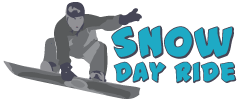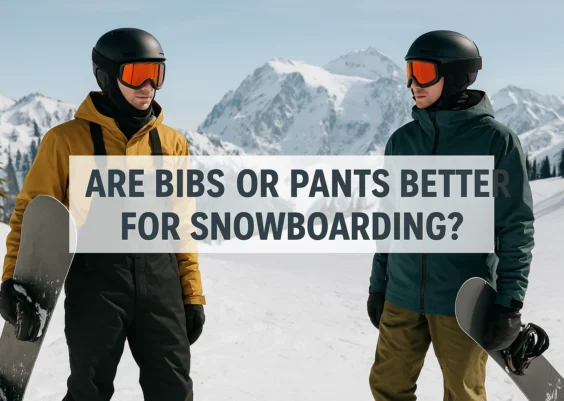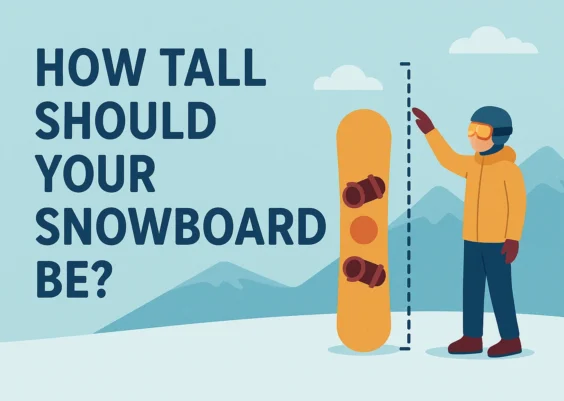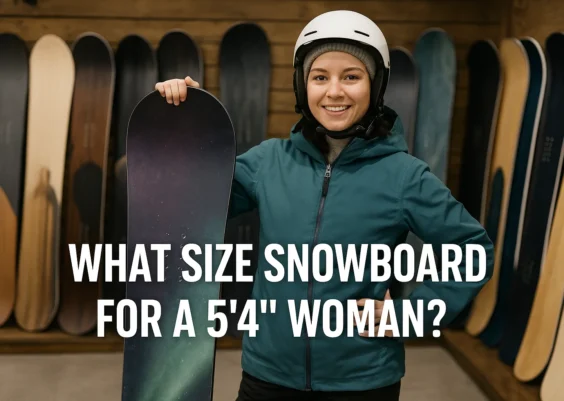Quick Facts
- Average snowboard length ranges from 90 cm for kids to 165 cm for adults.
- Rider weight is the most reliable sizing factor, more than height alone.
- A board should generally reach between your chin and nose when stood upright.
- Boot size matters: boards with waist widths of 235–285 mm match US boot sizes 6–14+.
- Beginners ride better on boards 2–4 cm shorter than the standard chart.
- Advanced riders often size up 2–4 cm longer for stability and speed.
- Kids’ boards usually run 80–145 cm, depending on age and weight.
In this guide, you’ll learn exactly how to pick the right snowboard size, using charts, rider examples, and step-by-step advice.
Choosing the right snowboard size is not guesswork, it’s a calculation shaped by numbers. The average adult snowboard ranges from 140 cm to 165 cm, while kids often ride boards as short as 80 cm.
Among all factors, rider weight has the strongest influence on how a board handles. Height, boot size, and riding style also guide the decision. A well-sized board improves balance, turning, and control, while the wrong size can make riding frustrating or unsafe.
Snowboard Size Quick Reference (Men vs Women vs Kids)
| Category | Rider Weight (lbs) | Rider Height (ft/in) | Recommended Board Length (cm) |
|---|---|---|---|
| Men | 120–150 | 5’4” – 5’7” | 145–152 |
| 140–170 | 5’6” – 5’9” | 150–156 | |
| 160–190 | 5’8” – 6’0” | 154–160 | |
| 180–210 | 5’10” – 6’2” | 158–163 | |
| 200+ | 6’1”+ | 160–168+ | |
| Women | 90–110 | 4’10” – 5’2” | 138–144 |
| 100–130 | 5’1” – 5’4” | 140–146 | |
| 120–150 | 5’3” – 5’6” | 144–150 | |
| 140–170 | 5’5” – 5’8” | 147–153 | |
| 160+ | 5’7”+ | 151–158 | |
| Kids | 30–50 | 3’0” – 3’7” | 80–100 |
| 50–70 | 3’7” – 4’3” | 100–120 | |
| 70–100 | 4’3” – 4’11” | 115–135 | |
| 100–120 | 4’11” – 5’5” | 130–145 |
How to Pick the Right Snowboard Size?
Finding the correct snowboard size is more than checking a single number. It’s a mix of weight, height, boot size, riding style, and skill level. Each factor changes how the board feels under your feet. The following steps break down the process so you can match your board to your body and the way you ride.
Step 1: Consider Your Height, Weight, and Boot Size
Snowboard sizing starts with hard numbers. Weight determines how well the board flexes under pressure, while height and boot size fine-tune the match. Use these charts to find your range.
Snowboard Size Chart by Weight
| Rider Weight (lbs) | Rider Weight (kg) | Recommended Board Length (cm) |
|---|---|---|
| 80–110 | 36–50 | 135–146 |
| 110–130 | 50–59 | 142–148 |
| 130–150 | 59–68 | 146–152 |
| 150–170 | 68–77 | 150–156 |
| 170–190 | 77–86 | 154–160 |
| 190–210 | 86–95 | 157–163 |
| 210+ | 95+ | 160–168+ |
Snowboard Size Chart by Height
| Rider Height (ft/in) | Rider Height (cm) | Recommended Board Length (cm) |
|---|---|---|
| 4’10” – 5’1” | 147–155 | 135–145 |
| 5’2” – 5’4” | 157–163 | 142–148 |
| 5’5” – 5’7” | 165–170 | 146–152 |
| 5’8” – 5’10” | 173–178 | 150–156 |
| 5’11” – 6’1” | 180–185 | 154–160 |
| 6’2” – 6’4” | 188–193 | 157–163 |
| 6’4”+ | 193+ | 160–168+ |
Boot Size Chart and Snowboard Width
| US Men’s Boot Size | Recommended Board Waist Width (mm) |
|---|---|
| 6–7 | 235–245 |
| 8–9 | 245–255 |
| 10–11 | 255–265 |
| 12–13 | 265–275 |
| 14+ | 275–285+ |
Step 2: Factor in Your Riding Style
Two riders with the same height and weight may need different board sizes because of how they ride. Riding style changes how much edge grip, flex, and stability you need. Choosing the right size here makes the board feel natural under your feet.
All-Mountain
The most versatile category. All-mountain riders usually choose a standard board size from the weight chart. For example, a rider weighing 170 lbs (77 kg) would ride around 154–160 cm. The goal is balance: enough length for stability, but short enough for quick turns anywhere on the mountain.
Freestyle
Freestyle boards are often 2–3 cm shorter than the standard size. This makes spins, grabs, and rail tricks easier. For instance, if the chart says 156 cm, a freestyle rider might pick 153–154 cm. The shorter length reduces swing weight, which helps in the park.
Freeride
Freeride boards work best when they are 2–4 cm longer than the standard size. A rider weighing 180 lbs (82 kg) who usually picks 158 cm may size up to 161–162 cm. The added length improves edge hold on steep slopes and keeps the board stable at high speed.
Powder
Powder boards are built longer with a wider nose. Riders often size 3–6 cm above standard. A 160 lb (72 kg) rider might choose a 160 cm powder board, even if their all-mountain board is only 154 cm. The extra surface area helps float on deep snow.
Splitboard
Splitboards, designed for backcountry, usually match freeride sizing. Riders often go 2–4 cm longer for stability on untracked terrain. For example, a 190 lb (86 kg) rider might look for 162–164 cm. Weight is key since the board must carry you uphill as well as down.
Step 3: Match Board Size with Ability Level
Skill level influences how much board you can handle. A beginner benefits from easier control, while advanced riders need stability at speed. The chart below shows how board length changes based on ability.
Sizing by Ability Level (Quick Chart)
| Rider Level | Adjustment from Standard Size | Example (170 lbs rider) |
|---|---|---|
| Beginner | 2–4 cm shorter | 154 → 150 cm |
| Intermediate | Standard size | 154–160 cm |
| Advanced | 2–4 cm longer | 156 → 160 cm |
Beginner Rider
Beginners learn faster on slightly shorter boards. A board 2–4 cm shorter than the standard size reduces edge catch and makes turning smoother. For example, a 150 lb (68 kg) beginner who fits a 152 cm standard board should consider 148–150 cm. Shorter boards respond quicker and boost confidence.
Intermediate Rider
Intermediate riders are comfortable on the standard length for their weight. A 170 lb (77 kg) intermediate will stay within 154–160 cm. This range balances maneuverability with stability, allowing progress into carving and varied terrain without feeling twitchy or unstable.
Advanced Rider
Advanced riders often size up for more power and control. A board 2–4 cm longer than the chart adds edge grip and stability at speed. For instance, a 190 lb (86 kg) advanced rider who fits a 160 cm board may choose 162–164 cm. Longer boards demand skill but reward with precision on steep, icy runs.
Step 4: Understand Snowboard Shapes and Profiles
The profile and shape of a snowboard change how it rides, even if the length is correct. Think of this as the board’s “personality.” The right match makes a huge difference in control, edge grip, and float.
Profile and Shape Quick Comparison
| Profile/Shape | Best For | Sizing Adjustment |
|---|---|---|
| Camber | Carving, speed | Standard size |
| Rocker | Powder, playful feel | +2–3 cm longer |
| Hybrid | All-around riding | Standard or ±1–2 cm |
| Directional | Freeride, carving | +2–4 cm longer |
| True Twin | Freestyle, park | –2–3 cm shorter |
| Directional Twin | All-mountain | Standard size |
Camber
A camber board curves upward in the middle when laid flat. It offers strong edge hold and pop. Most camber boards match standard size recommendations. For example, a 160 lb rider often rides a 154–156 cm camber board for carving and speed.
Rocker
A rocker board, or reverse camber, curves upward at the tips. It floats better in powder and feels looser underfoot. Riders often size up 2–3 cm longer for stability. A 170 lb rider might ride 158 cm rocker instead of a 155 cm camber.
Hybrid Profiles
Hybrids mix camber and rocker zones. They offer versatility—camber underfoot for grip and rocker tips for float. Riders usually follow the weight chart directly, adjusting only 1–2 cm if they lean more toward park or freeride.
Snowboard Shapes
- Directional: Longer nose, shorter tail. Best sized slightly longer for carving and freeride.
- True Twin: Same shape tip to tail. Park riders often size slightly shorter for tricks.
- Directional Twin: A blend. Sized close to the standard chart for all-mountain use.
Step 5: Additional Snowboard Features to Know
Once you’ve narrowed size, riding style, and profile, a few extra features fine-tune how the board feels. These details don’t change overall board length much, but they affect performance and comfort on the snow.
Sidecut Radius
The sidecut radius is the curve of the edge. A smaller radius (6–8 m) turns tighter and feels quicker, good for freestyle and beginners. A larger radius (8–10+ m) offers longer, smoother turns, best for freeride and carving.
Effective Edge
This is the part of the board that touches the snow when turning. A longer effective edge gives more grip on icy runs. For example, a 158 cm freeride board may have an effective edge of 122 cm, while a freestyle board of the same size might be 118 cm for easier spins.
Flex
Flex rating affects how responsive the board feels:
| Flex Rating | Type | Best For |
|---|---|---|
| 1–2 | Soft | Beginners, freestyle tricks |
| 3–5 | Medium | All-mountain balance |
| 6–8 | Stiff | Freeride, carving, high-speed runs |
| 9–10 | Very Stiff | Advanced racers, steep terrain |
A 150 lb beginner might prefer a soft flex board in the 1–3 range, while a 190 lb advanced rider may choose a stiff board in the 7–9 range for control.
Base Materials
- Extruded base: Cheaper, durable, slower speed. Common in beginner boards sized shorter.
- Sintered base: Faster, needs more wax, used in advanced freeride boards often sized longer for speed.
Binding Compatibility
Most modern boards use a 4×4 or Channel system. Always check your bindings fit the board width. A boot that hangs more than 1.5 cm over the edge risks toe drag, which sizing correctly helps prevent.
Step 6: Choose Snowboards by Gender and Age
Snowboards are not one-size-fits-all. Men, women, and kids have different body builds, boot sizes, and riding needs. The charts below help match board length to body type.
Men’s Snowboard Size Chart
Men generally ride longer and wider boards to support higher body weight and larger boots.
| Weight (lbs) | Height (ft/in) | Recommended Board Length (cm) |
|---|---|---|
| 120–150 | 5’4” – 5’7” | 145–152 |
| 140–170 | 5’6” – 5’9” | 150–156 |
| 160–190 | 5’8” – 6’0” | 154–160 |
| 180–210 | 5’10” – 6’2” | 158–163 |
| 200+ | 6’1”+ | 160–168+ |
A 190 lb rider at 6’0” would feel stable on a 158–160 cm board, while a 140 lb rider at 5’6” rides best around 150–152 cm.
Women’s Snowboard Size Chart
Women’s boards are slightly narrower and shorter, matched to smaller frames and boot sizes.
| Weight (lbs) | Height (ft/in) | Recommended Board Length (cm) |
|---|---|---|
| 90–110 | 4’10” – 5’2” | 138–144 |
| 100–130 | 5’1” – 5’4” | 140–146 |
| 120–150 | 5’3” – 5’6” | 144–150 |
| 140–170 | 5’5” – 5’8” | 147–153 |
| 160+ | 5’7”+ | 151–158 |
For example, a 125 lb woman at 5’4” should look for a 144–146 cm board for balance and control.
Kids’ Snowboard Size Chart
Kids’ boards are shorter and lighter, designed to match rapid growth. The board tip should generally reach between a child’s chest and chin.
| Age | Height (cm) | Weight (lbs) | Board Length (cm) |
|---|---|---|---|
| 3–5 | 90–110 | 30–50 | 80–100 |
| 6–8 | 110–130 | 50–70 | 100–120 |
| 9–12 | 130–150 | 70–100 | 115–135 |
| 13–15 | 150–165 | 100–120 | 130–145 |
A 10-year-old child at 4’8” (142 cm) and 80 lbs would ride best on a 120–125 cm snowboard.
FAQs
How do I know if my snowboard is too short or too long?
A snowboard that feels shaky and unstable at higher speeds is usually too short. On the other hand, if the board feels heavy, slow to turn, or difficult to control, it’s probably too long. Correct sizing balances stability with easy maneuverability.
Should beginners go shorter or longer?
Beginners should pick boards 2–4 cm shorter than the standard chart suggests. Shorter boards are lighter, turn more easily, and catch fewer edges, which builds confidence. Once skills improve, riders can move closer to standard sizing for more stability and better edge control.
Do men and women really need different boards?
Yes, most of the time. Women’s snowboards are generally shorter, lighter, and narrower to match smaller frames and boot sizes. This difference improves control and comfort. Men’s boards are longer and wider, built to handle heavier weight and larger feet for stability and power.
Can one snowboard size work for all riding styles?
It can work, but it won’t be ideal. Freestyle boards are shorter for tricks, freeride boards are longer for stability, and powder boards need extra length for float. A standard all-mountain size is versatile, but serious riders often use multiple boards for specific styles.
What if I fall between two sizes?
If you’re between two sizes, think about how you ride. Shorter boards turn faster and feel playful, while longer boards provide stability and control at speed. A 170 lb rider might choose 156 cm for park laps or 158 cm for freeride and carving.
How much does boot size matter in snowboard width?
Boot size is critical. If your boots overhang more than 1.5 cm beyond the edges, you risk toe or heel drag. Riders with US men’s size 11 or bigger should look for wide boards with waist widths above 260 mm for better fit and control.
Does height matter as much as weight?
No, weight is the main factor because it affects how the board flexes and responds. Height helps with fine-tuning length but should not outweigh weight considerations. Two riders of the same height but different weights will almost always need different board sizes for proper balance.
Do kids need new boards every season?
Not necessarily. A board can last up to two seasons if it still reaches between a child’s chest and chin. The most important factor is control: if the board feels too heavy or hard to maneuver, it’s time to size down or buy a new one.
Snowboarding feels effortless when your board matches your body and style. Charts and tables are useful, but they only become meaningful once you put them into practice on snow. Try different boards, pay attention to how each one feels under your feet, and adjust from there. That’s the real key to understanding how to pick the right snowboard size, it’s about combining the data with your own riding experience until the board feels like an extension of you.




